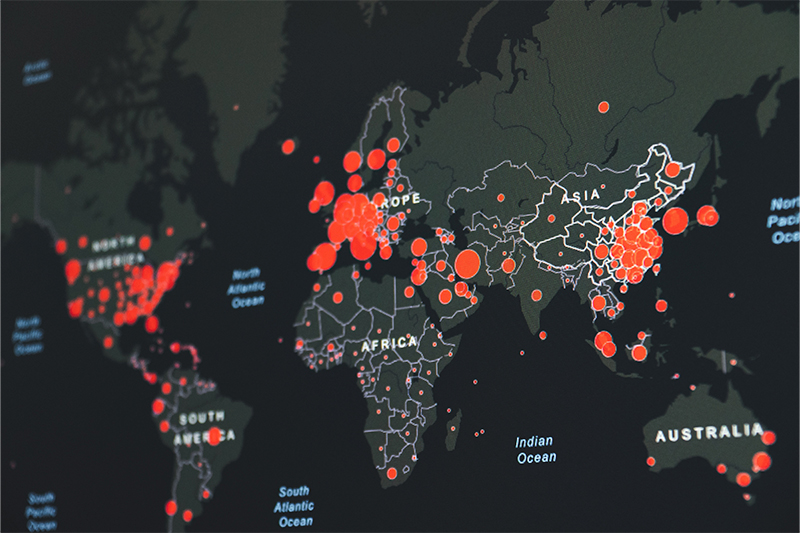
The pandemic is over, what's next?
Now that COVID is over, resilience professionals are considering what is next for impactful emergencies. Indeed, concerns about cyberattacks are understandably trending over the last few years as many businesses increased their digital footprint. Then, there’s a recognition that a polycrisis can occur. A polycrisis could either have a cascading effect from an originating event or consist of two disparate crisis events that are impactful simultaneously. Regardless, the expectation of an increasingly impactful crisis has increased exponentially.
The World Health Organization declared COVID-19 ended as a global health emergency on May 5. With cautious optimism, WHO Director-General Tedros Adhanom Ghebreyesus expressed great hope in lowering the threat level worldwide. It’s been three long years since the WHO issued the emergency declaration on Jan. 30, 2020. Now is a time to reflect, regroup, and consider what is next for a potential global crisis. However, this blog won’t delve too deep into that (future blog) but instead takes a near-term view.

Who do we believe and does it matter?
On May 11, 2023, the Biden Administration announced the end of US national and public health emergency declarations. However, some healthcare organizations state that although the rates are declining, the pandemic isn’t over. The WHO didn’t say the pandemic was over. In their eyes, the continued number of cases and death rate across the globe is still at pandemic levels. The WHO determined that “a public health emergency of international concern (PHEIC)” was no longer required, as adequate resources are in place to handle issues locally. The healthcare system thinks we shouldn’t let our guard down.
However, the rest of the world appears to think otherwise. Even though I have observed some individuals wearing masks, most people and medical offices have lowered their PPE requirements. Other protocols are no longer enforced. And, unless you are living under a rock or in an industry where this does not affect you, we are all seeing the pressure corporate leadership puts on their employees to return to the office. Yet, many have resumed the everyday routines of daily life. As practitioners, we balance the needs of our employees with a keen understanding of what is happening in the world around us.

Could the pandemic come back?
Of course, we know that the declaration that COVID is over doesn’t mean it has gone away. The SARS-CoV-2 virus will continue to circulate in the human population. In the back of any scientist or medical professional’s mind is the reality that the continued reduction of the impact of the virus on our population rests in the ability of every country to address the cases in their countries. We know that healthcare systems remain stressed globally.
As I wrote in COVID-19 The Next Normal Ahead in 2020, we must remain vigilant. However, it is easy for practitioners to focus on the perceived risks ahead. That is a great part of our job as we shift into a resilience-first mindset. Rather than reacting to events from a purely Business Continuity Management standpoint, we are emphasizing the preventative elements of the discipline. A large part of business resilience recognizes an organization’s holistic threats. As a crisis manager, I understand the unpredictable nature of a hazard to threaten an organization, so I am always trying to advance mitigation of the unknowable. So, there is always a possibility that the pandemic could overwhelm our health systems again if cases surge.

Could H5N1 be the next pandemic?
Or, it is just as possible that a new virus emerges on the world stage. Scientists are watching a surge in H5n1 bird flu in Cambodia, where a young girl died in February. Go to the CDC site to learn more about the current situation summary. It might not be the next worldwide pandemic, but it may affect populations where outbreaks occur. Scientists are incorporating lessons learned from COVID-19. Nature Journal published a recent article on How to stop the bird flu outbreak from becoming a pandemic. You know I am always hopeful but remain cautious of our ability to prevent large-scale events. H5N1 may not be the next global pandemic, but they watch other animal-to-human transmission events.
Scientists are concerned about H5N1, also known as avian influenza or bird flu, due to its potential to cause severe illness and death in both birds and humans. H5N1 is a highly pathogenic strain of influenza that has demonstrated the ability to infect humans, with a high mortality rate in reported cases. The worry stems from its ability to undergo genetic mutations, potentially leading to human-to-human transmission and the emergence of a global pandemic. Scientists fear that if H5N1 were to acquire efficient human-to-human transmission, it could spread rapidly, causing widespread illness and overwhelming healthcare systems. Therefore, the potential for H5N1 to pose a significant public health threat and its unpredictable nature make it a primary concern for scientists worldwide.

Summer is in the air, what to do
In the Northern Hemisphere, summer is in the air. U.S. air travel hit pandemic-era highs last week. People are saying COVID is over by voting with their feet. Summer travel is anticipated to be up over last year. That means more vacationing, even with increased costs. It isn’t stopping people from getting some downtime with family, friends, or simply for self-care. You may ask what this has to do with resilience, but like I just talked to Katie Belif about on a recent podcast, it is vital for our resilience, too.
From a risk perspective this summer, we should be particularly concerned about a range of potential risks. Firstly, the ongoing COVID-19 pandemic remains a crucial area of focus as the possibility of new variants and localized outbreaks persist, requiring organizations to adapt their operations and response plans accordingly. Additionally, extreme weather events such as hurricanes, wildfires, and heat waves are expected to continue escalating due to climate change, posing threats to businesses, supply chains, and communities. Moreover, cybersecurity remains a critical concern as cyber threats and data breaches evolve and increase in sophistication, requiring robust defense measures. Lastly, geopolitical tensions and economic uncertainties, including trade disputes and policy changes, may introduce additional volatility and disruption in global markets, prompting risk managers to closely monitor these developments to mitigate potential impacts on their organizations.

Managing Risk Across the Globe
Of course, many of these risks also concern those in the Southern Hemisphere. Just switch out the extremes in temperatures where warranted. Regardless, we need to remain vigilant. The coronavirus may no longer be a public health emergency of international concern (PHEIC), but risks in our current environment can quickly become volatile.
Given this summer’s diverse and evolving risks, organizations and individuals must prioritize resilience. Now is the time to proactively assess vulnerabilities, enhance preparedness measures, and foster a culture of adaptability and agility. Organizations should invest in robust risk management strategies, including comprehensive business continuity plans, strong cybersecurity defenses, and effective crisis communication protocols. It is crucial to promote cross-functional collaboration, continuous learning, and the integration of emerging technologies to build resilience in the face of uncertainties. Taking decisive action and embracing a proactive approach to risk management, we can navigate challenges with strength, safeguard our operations, and ensure our organizations’ long-term sustainability and success.
Did you know?
Disaster Empire blogs contain embedded links to source materials, articles of interest, videos, books, and training I recommend. Just click on the blue embedded link to access the resource.
